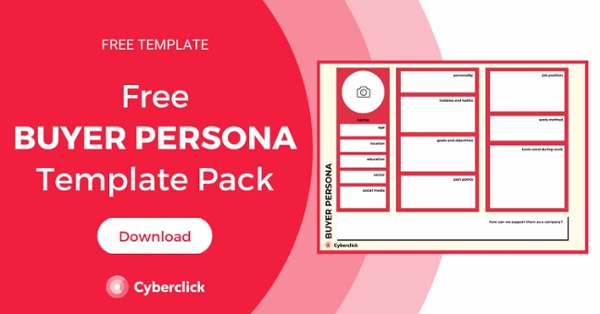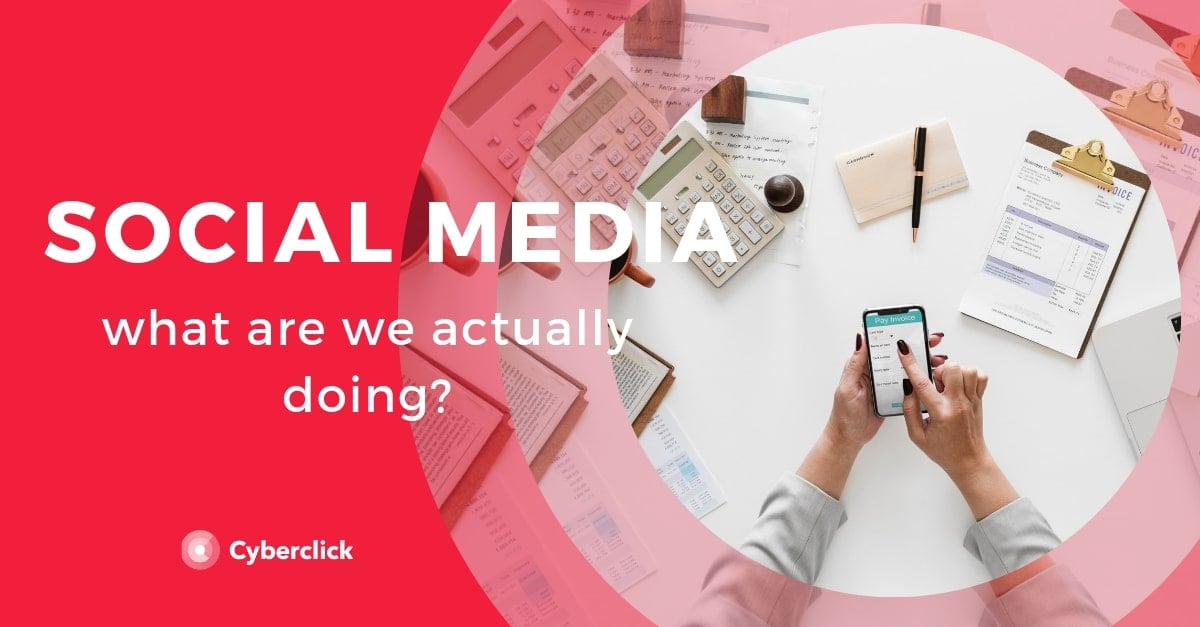Along the lines that the key to achieving happiness is knowing yourself, the key to achieving success in marketing is, knowing your clients.
With an understanding for your customers “problems” comes an understanding of how to engage them with your “solutions”. Knowledge of customer emotions and thoughts allows us to anticipate their needs and offer them products when they are desired.
Your ideal client will not necessarily be anything like you or your team, which can make it tricky to put yourself in their shoes.
To solve this problem, and get to know your clients like the back of your hand, let’s explore how to design buyer personas for inbound marketing.
Throughout this article, we’re exploring how to address these 3 questions:
-
What is your customers’ “problem”?
-
What is your “solution”
-
How can your customer feed their curiosity for your solution?
Let’s start with a small test, when creating a digital marketing campaign to engage with a diverse range of users, do we:
A: Make the message as broad as possible to accommodate the most people
B: Design specific messages for specific types of individuals with specific needs
If you answered B - you’re on the right track. If you try to communicate a message that pleases everyone, you end up with a message restricted of depth and importance that ends up pleasing no one.
The key to reaching your clients, is knowing your clients. For this reason, we segment the most important users or customer groups. By designing different marketing communications, for different people, with different “problems”, we communicate our “solutions” through messages that people with similar “problems” to our target user and customer groups also find engaging.
What is a Buyer Persona?
A buyer persona is a semi-fictitious representation of your company’s ideal client. Basically, it is to characterize the people who will buy your products or hire your services such as their motivations, their challenges, their goals, needs, circumstances, etc. To give a brief outline, we look into the following aspects to design a buyer persona:
-
Key representations or symbols of your target audience
-
Archetypical person
-
Ethnographic research
-
Demographics: name, age, occupation, location, marital status, children, income, education, hobbies, etc.
To truly use this tool properly, we have to go much further than demographic information, and include a psychological and social profile of the client.
Creating a good client profile is not hard, but requires in-depth studies and knowing to ask the right questions to get the answers you need: and to orient your inbound marketing campaigns’ content.
Logically, you can have several profiles for different types of clients, although the ideal is to go step by step, and create new ones according to your brands needs.
You may also find it useful to define negative profiles as well, in other words, to define the kinds of people who do not interest you as potential clients (for example, those who use your content for other reasons, or because the acquisition and retention costs are too high to be profitable).
Here is a summarized example of what part of such a profile could look like:
Mary is responsible for her company’s Marketing Department, where she has been working since she graduated 15 years ago. She is divorced and has a daughter who lives with her. Her annual income is around 50,000 euros gross and lives in a house on the outskirts of a large city.
When looking for external suppliers, she seeks quality guarantees and provable experience. She goal is to improve her company’s results while maintaining a favorable worker satisfaction level in her department. She is particularly interested in a technological solution that will allow her to centralize the information flows and her employee’s trainings.
How to design a buyer persona for your inbound marketing campaigns
To successfully use this marketing tool, the key is investigation, investigation, investigation - also known as ethnographic research.
Your profile is that of a fictitious person, but should always be based on real life cases. For this reason, the first step is to acquire this information by interviewing several people:
-
Current clients. They are already using your product, so theoretically they should be a good representation of people who need it. They will help you understand what needs your product satisfies and how it could be improved.
-
Potential leads. They have not yet become clients, but you know they are interested in what you have to offer and you have their contact information, so don’t miss out on any opportunity to get to know them better.
-
Your network. If your company is new to or just entering a sector for the first time, you will have to find people within your contact network who can recommend people for you to interview.
Once you have chosen the people you will be interviewing, you now have to convince them to collaborate. I recommend not offering incentives, as it might influence results.
Generally, clients like feeling like they are listened to, so as long as you make you intentions very clear you shouldn’t have too much trouble.
Make it as easy as possible for them to participate and, if possible, personalize the interviews as opposed to doing them in groups.
Lastly, you are probably asking yourself how exactly to formulate the questions.
Next I will explain what exactly you need to know about your imaginary client, which you can use as a guide to develop your interview.
What do I need to know about my ideal client?
The whole point of the interview is to obtain information that will guide your inbound marketing campaigns, so asking the right questions is essential.
According to Hubspot, these are the sections any good buyer persona should have, and the information you need for each one…
1) Who?
Here you need to gather your ideal client’s demographic information:
-
General Profile: their job, the basic data concerning their work experience and family situation.
-
Demographic information: their age, salary, where they live and gender.
-
Identifiers: What their personality and behavior is like, and how they prefer to be contacted.
2) What?
Here the goal is to reflect on how your company can help them through the following points:
-
Primary and secondary goals.
-
Primary and secondary challenges.
-
What your company can offer them to achieve their goals and overcomes their challenges.
3) Why?
Don’t forget to echo the feedback you get in the interviews, with real comments about your clients goals and challenges, as well as the most common complaints or objections. This is the ideal section for that.
4) How?
Once you truly understand your clients’ needs, the time comes to define the messages you are going to use to reach out to them:
-
Marketing messages: how would you describe your company’s solution to this persona?
-
Sales messages: how would you sell them the solution?
Last but not least, two recommendations when writing: try to use the tone of voice and type of vocabulary that fit their personality, and pick a name and picture to represent them.
The more your persona seem like a real person, the more it will inspire both you and your team when orienting your campaigns!
The power of visualisation
To reach your buyer personas, don’t forget the power of visualisation. When you can paint a picture of your customer, a graphical image, and you can see your goal, this allows team alignment and success in achieving the goal.
Often we stop with thinking of our persona’s profile. We’ve painted a picture of our “Mary” who is responsible for her company’s Marketing Department, but to truly engage with the customer, why not try understanding the context where this persona finds itself in - the bigger picture.
This is where the customer journey comes to play. A customer journey can be seen as a roadmap to reaching this newly designed buyer persona ‘profile’.
A customer journey map involves the following elements:
-
visualization/draft of the experience of one user - i.e. one single customer journey
-
detailed breakdown of key stages in this customer experience, focussing on what the user is trying to achieve in this stage
-
a customers ideal journey drafted and compared with actual journey
-
emotional mapping (the emotional lows and highs), touchpoints, feelings
-
geographical mapping of location and information needed by the customer
Taking the user point of view enables us to view the shortcomings in existing offer design. It's important to note that each specific buyer persona embarks a unique customer journey. The point is not to map one journey which you could see your various buyer personas. the point here is to stay true to the individuals natural occurrences in life, and be as specific as possible mapping various journeys.
Jessica ha cursado negocios internacionales en Warwick Business School y tiene especial interés por los emprendedores sociales.
International Business at Warwick Business School. Inspired by Social Entrepreneurs.






Leave your comment and join the conversation